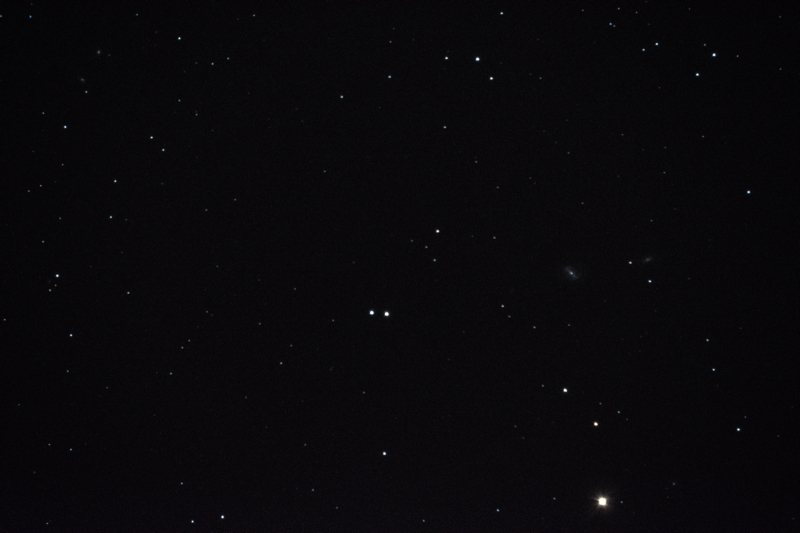AZ Public Media Interview;
Imaging: Messier Galaxies, Sarah's Galaxy
Posted: 22 March 2017
Monday, 20 March 2017, was a partly cloudy and windy day. However, the day (and evening) was filled with lots of fun. A producer and camera operator from the Arizona Public Media PBS TV station in Tucson spent several hours at Cassiopeia Observatory doing a story to be aired in April on "Arizona Illustrated". Here I am getting mic'd up in my office:


With the clouds we had a nice Arizona sunset, which they wanted to capture:


I will post when the show is available online.
Tuesday, 21 March, was mostly clear. That evening the Oracle Dark Skies Committee and the Saddlebrooke SkyGazers Club supported "Family Reading Night" at Mountain Vista School. The ODSC had an information table with brochures on light pollution available to parents, teachers, and students. Views through telescopes were also available.
When I returned home the sky was clear so I headed out to the observatory.
|
Open: Tuesday, 21 March 2017, 2125 MST Temperature: 72°F |
Session: 1089 Conditions: Clear, breezy |
Equipment Used:
12" f/8 LX600 w/StarLock
2" 24mm UWA eyepiece
Camera:
D7200 DSLR
2132 MST: LX600 ON, StarLock OFF, High Precision OFF.
Slewed to M65 (galaxy), which would be my first imaging target. Nice view, 102X.
Slewed to the star Denebola and SYNCed the AutoStar. Mounted the D7200 DSLR at prime focus + focal reducer, focused on Denebola using the Bahtinov Mask, and locked the primary mirror.
Slewed back to M65. 2145 MST: StarLock ON.
M65 galaxy (top) and M66 galaxy (bottom), autoguided 5 minutes, ISO 6400, White Balance 3570K:

Then imaged NGC3628 (Sarah's Galaxy), autoguided 5 minutes, ISO 6400, WB 3570K:

Next was M40 (double star), autoguided 30 seconds, ISO 1600, WB 3570K:

Slewed to M85 (galaxy) for this autoguided 5 minutes, ISO 6400, WB 3570K, that also shows the galaxies NGC4394 (left) and IC3292 (right):

Seeing was beginning to worsen. My last galaxy imaged this night was M88, autoguided 5 minutes, ISO 6400, WB 3570K:

2236 MST: StarLock OFF.
Unmounted the DSLR and focal reducer. Viewed the galaxies M88 and M85, 102X.
2250 MST: viewed Jupiter, 102X. Some nice details in the cloud bands were visible, as were the four Galilean Moons.
|
Close: Tuesday, 21 March 2017, 2300 MST Temperature: 63°F |
Session Length: 1h 35m Conditions: Clear, breezy |
Comments are welcome using Email. Twitter users can use the button below to tweet this report to your followers. Thanks.
Cassiopeia Observatory Home Page
Copyright ©2017 Michael L. Weasner / mweasner@me.com
URL = http://www.weasner.com/co/Reports/2017/03/22/index.html
